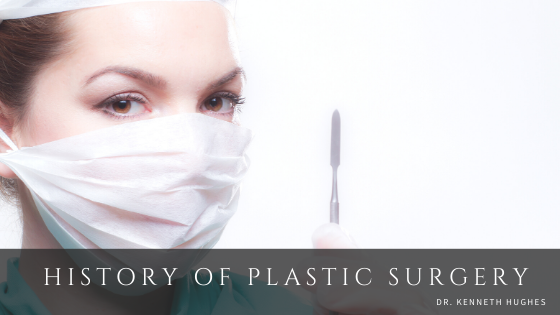Invasive and non-invasive procedures remain a popular means of enhancing physical appearance and stave off the effects of aging. Plastic surgeons report that nearly 18 million procedures are performed each year. However, few realize that the medical field has a long and fascinating history.
Ancient Times
In 800 B.C., physicians in India were known to perform skin grafting. Roman author Aulus Cornelius Celsus penned “De Medicina” that described the methods used to perform facial reconstructive surgery during the Greco-Roman era. Oribasius put together a 70-volume medical encyclopedia known as “Synagogue Medicae” during the Byzantine period. The contents included articles describing methods used to repair facial anomalies.
Medieval Period
Reconstructive surgery was common in Europe and continued until the fall of the Roman Empire. For a time, science became equated with evil. As such, Pope Innocent III outlawed surgery. However, physicians continued learning and refining their techniques. But, the lack of hygienic practices compromised the health of patients. Yet, by the 10th century, advances in cosmetic surgery included the ability to correct cleft palates.
The Renaissance
The era is renowned for having an exponential growth of knowledge and creativity. Important advancements in medicine and science emerged. During the 15th century, Serfeddin Sabuncuoglu wrote “Imperial Surgery,” which included detailed information concerning maxillofacial and other types of cosmetic surgeries. Articles describing the treatment for gynecomastia are believed to have established the techniques for breast reduction.
Modern Times
Cosmetic practices waxed and waned from the 17th to the 18th centuries. But, the serious injuries suffered by soldiers during WWI made it necessary for surgeons to hone their skills in order to make corrective repairs. Military doctors commonly treated head and facial trauma endured during battle. Advances in medicine also created a better understanding of the need for infection control along with the development of anesthesia. During this time, documents recorded a number of cosmetic procedures that include breast augmentation and rhinoplasty.
The first cleft palate correction in the United States was performed by Dr. John Peter Mettauer in 1827. The physician also crafted his own instruments. But, plastic surgery was not considered a special field of practice until the early 1900s. During this time, surgeons developed methods to correct jaw lines and protruding ears. A number of physicians documented and published their techniques. In 1946, the first issue of “Journal of Plastic and Reconstructive Surgery” was introduced.

